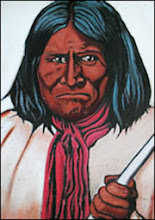 In the United States in the year 1998, Thomas Youk, who was of sound mind but suffering from terminal Lou Gherig's Disease, asked Dr. Jack Kavorkian, a pathologist famous for medical assisted suicide, and nicknamed "Dr. Death," to end his suffering by medical euthanasia. Mr. Youk's immediate family was supportive of his decision. Nevertheless, Dr. Kavorkian ended up being tried and convicted of second-degree murder in Michigan in 1999. Mr. Youk's euthanasia in 1998 was depicted in an episode of a broadcast of the ever popular CBS news magazine program "60 Minutes" the Sunday after the euthanasia had taken place. The photo depicted here of Mr. Youk seated in his home with Dr. Kavorkian standing by his side during his final moments is a scene from that broadcast.
In the United States in the year 1998, Thomas Youk, who was of sound mind but suffering from terminal Lou Gherig's Disease, asked Dr. Jack Kavorkian, a pathologist famous for medical assisted suicide, and nicknamed "Dr. Death," to end his suffering by medical euthanasia. Mr. Youk's immediate family was supportive of his decision. Nevertheless, Dr. Kavorkian ended up being tried and convicted of second-degree murder in Michigan in 1999. Mr. Youk's euthanasia in 1998 was depicted in an episode of a broadcast of the ever popular CBS news magazine program "60 Minutes" the Sunday after the euthanasia had taken place. The photo depicted here of Mr. Youk seated in his home with Dr. Kavorkian standing by his side during his final moments is a scene from that broadcast.Forms of euthanasia have been the norm in many traditional Indigenous American societies. Elderly, invalid Inuits ("Eskimos") as an example and back in the old days, used to voluntarily die of exposure to the freezing cold in a matter of minutes by being transported to a sacred place and removing their garments. Similar types of elder euthanasia took place among other indigenous societies throughout the Americas in a sacred cave or outdoor location. Traditional Indigneous American elders held the view that it was unfair of them to be a burden to their families and communities when the time came where they could no longer contribute to the community and tend to their basic needs by themselves. Younger people who ended up becoming severly disabled due to injury or disease also held the same view about themselves, especially when they suffered from incurable, ongoing pain.
In many traditional Indigenous American societies, newborns born with severe, dehabilitating birth defects were often euthanized by being placed in a natural body of water, usually a stream or river, to drown. It was not considered humane to allow such a person to spend a life in such a state of being.*
Persons born with severe mental disabilities, or those who developed mental disabilities due to illness or injury, were generally not euthanized if they were at least marginally functional physically, and appeared to adequately perceive and recognize certain people and their overall environment.
In this day and age of modern medicine and humane care facilities for the elderly and severely disabled, such mercy killings are no longer necessary in non-primitive societies. Nevertheless, contemporary Indigenous American traditionalists hold the view that assisted suicide ought to be a matter of legal individual choice on the part of those of sound mind to make that choice for themselves, including immediate family members having to deal with a loved in a permanent mental vegetative state.
Indigenous American traditionalists view death as nothing more than a change of worlds not to be feared, and consider most categories of mercy killing to be moral and humane as long as the act is swift and painless.
Infanticide in North Korea



4 comments:
Thank you!
[url=http://wnjvlcdn.com/rxvq/sipi.html]My homepage[/url] | [url=http://joncbxoe.com/kaqa/skra.html]Cool site[/url]
Well done!
My homepage | Please visit
Thank you!
http://wnjvlcdn.com/rxvq/sipi.html | http://woebjcfs.com/jten/mraz.html
I think euthanasia is a very goo point of discussion; I am pro-euthanasia. I see it as an honorable way of ending ones life, when he thinks his time has come to leave this world, and pass on to the next. It should not, on the other hand, become a way for idiots to kill themselves easily for no good reason. I would not mind executions either, instead of some pussy prik in the arm and off you go. I think that'd be a very honorable way to die actually. Some public square, a last salute, and BOOM! Gone. It is messy though, and I'm drifting off the subject.
What about eathanasia with people who are unable to think for themselves? Should family decide? Or should the doctors take control to prevent people living as plants in some corner of a hospital with no end in sight but death?
Post a Comment